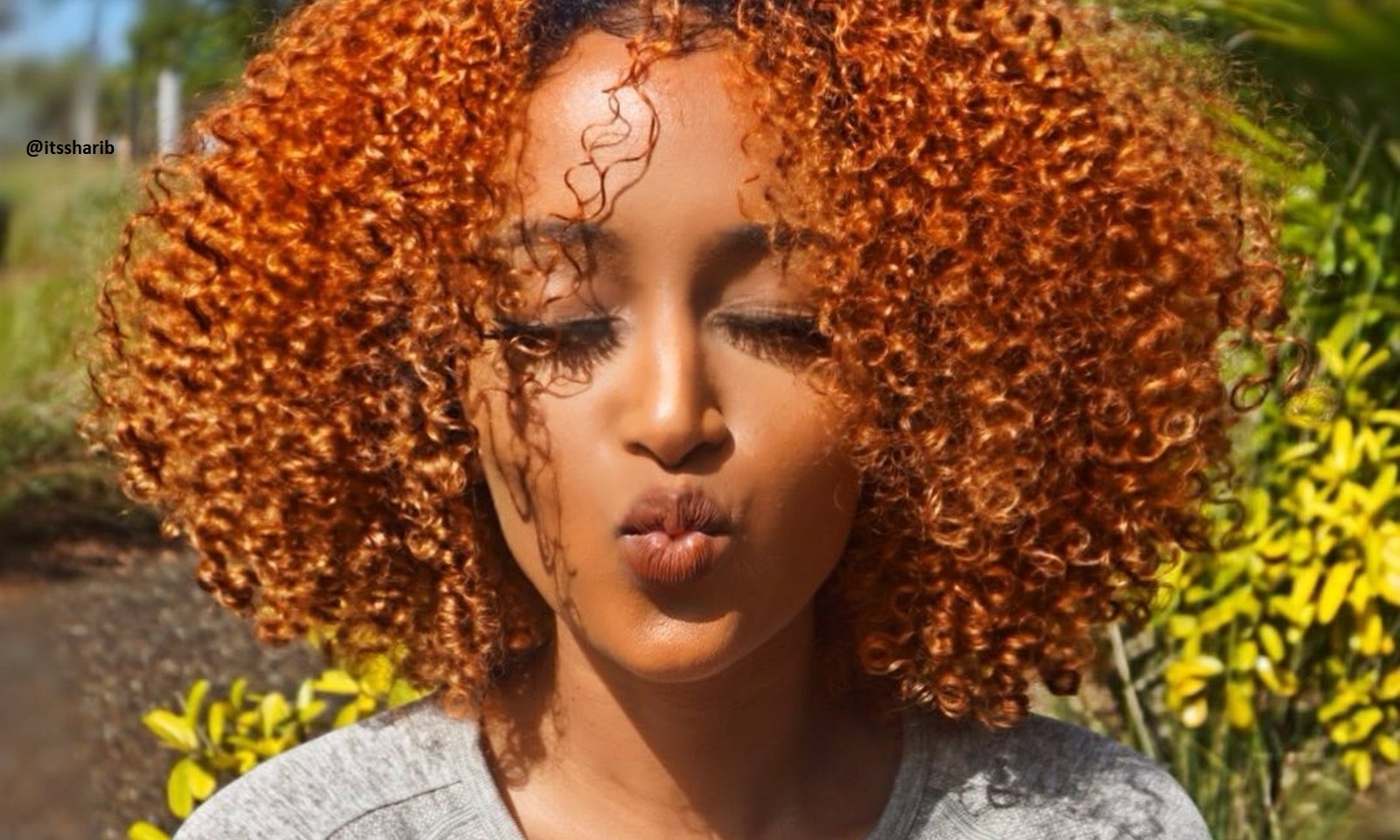Growing up, I always felt a little lost in the world of fashion. With my deep brown skin, I struggled to find colors that truly flattered me. I’d often find myself gravitating towards the same old neutrals, feeling like I was missing out on the bolder, brighter hues that seemed to suit everyone else. It wasn’t until I started consciously exploring color theory and understanding the nuances of my skin tone that I discovered a whole new world of vibrant possibilities. This journey led me to learn about the remarkable connection between skin tone and color, and how the right shades can truly enhance your natural beauty.

Image: www.colorsidea.com
This guide aims to empower you, dear reader, with the knowledge and tools to find your perfect color palette, embracing your unique dark skin tone and celebrating the richness it brings. Get ready to delve into the fascinating world of color theory, explore the most flattering shades, and discover how to express your personal style with confidence.
Understanding the Spectrum of Dark Skin Tones
There’s a common misconception that “dark skin” is a singular category, but the truth is, dark skin tones come in a beautiful range of shades and undertones. We’re not talking just about the difference between dark brown and black, but the subtle variations that influence how colors appear on our skin. Just like with lighter skin tones, understanding your undertone is crucial to choosing colors that will enhance your natural radiance.
Here’s a breakdown of the most common undertones:
- Warm Undertones: These tones often have a golden, yellow, or olive cast. Look for colors with a hint of warmth, like terracotta, amber, or burnt orange.
- Cool Undertones: Cool undertones usually have a bluish, pink, or grayish cast. Colors like deep burgundy, emerald green, or sapphire blue complement these tones beautifully.
- Neutral Undertones: Neutrals fall somewhere between warm and cool. They can wear a wider range of colors, but often look best in earthy tones, muted colors, and rich, saturated shades.
The Power of Color Theory
Color theory is a fundamental concept in understanding how colors interact with each other and how they affect the way we perceive them. In the context of fashion and beauty, it’s crucial to grasp the basic principles of color theory to make informed choices about your wardrobe and makeup. Here’s how it applies to dark skin tones:
Complementary Colors
Complementary colors are pairs that sit opposite each other on the color wheel. These pairings create a high contrast and often offer a bold, dramatic look. For dark skin, a few notable complementary pairs include:
- Yellow and Violet: A vibrant combination that adds warmth and depth to dark skin.
- Green and Red: A bold and dramatic pair that complements a wide range of dark skin tones.
- Blue and Orange: This pairing creates a stunning contrast, particularly effective for evening wear.

Image: vivaglammagazine.com
Analogous Colors
Analogous colors are three colors that sit next to each other on the color wheel, creating a harmonious and balanced look. For dark skin, analogous color combinations offer a sophisticated and understated elegance. Some examples include:
- Blue, Blue-Green, and Green: This combination is particularly flattering for cool undertones.
- Red, Red-Orange, and Orange: This vibrant trio brings warmth and vibrancy to a look.
- Yellow, Yellow-Green, and Green: A fresh and lively combination that complements warm undertones.
Exploring Colors That Flatter Dark Skin
Now that we’ve discussed the fundamentals of color theory, let’s dive into the specific colors that stand out when paired with dark skin. Here are some of the best choices across different shades and undertones:
Warm Undertones
Warm undertones thrive with colors that amplify their natural golden glow. Here are some top picks:
- Terracotta: Terracotta is a rich, earthy color that adds warmth and depth to dark skin.
- Amber: This golden hue complements warm undertones beautifully, reflecting a radiant glow.
- Burnt Orange: A bolder choice, burnt orange adds a fiery touch and brings out the warm tones in your skin.
- Deep Red: A classic choice for warm undertones, deep red can range from burgundy to crimson, creating a sophisticated look.
Cool Undertones
Cool undertones have a bluish or pink cast, and they benefit from colors that enhance these cool tones.
- Deep Blue: A powerful and elegant choice, deep blues can range from sapphire to navy, adding a sense of depth to your skin.
- Emerald Green: A regal color, emerald green brings out the cooler tones in dark skin, creating a sophisticated look.
- Deep Purple: From lavender to amethyst, deep purple shades can create a magical and ethereal effect on cool undertones.
- Pink: While it might seem counterintuitive, the right shade of pink can work wonders for cool undertones, adding a fresh and youthful touch.
Neutral Undertones
Neutral undertones have the luxury of being able to wear a wider range of colors. While they can often pull off both cool and warm shades, certain hues shine brighter than others.
- Rich Jewel Tones: Emerald green, sapphire blue, ruby red, and amethyst purple all make stunning choices for neutral undertones, adding depth and dimension.
- Earthy Tones: Neutral undertones look amazing in colors like olive green, taupe, and brown, creating a grounding and sophisticated look.
- Deep Black: Black is a versatile and timeless color that works for practically everyone, but it’s particularly flattering for neutral undertones.
Expert Tips for Choosing the Right Colors
You’ve discovered the basics of color theory, learned about various skin tones, and explored a list of flattering colors. Now let’s move on to practical tips that you can implement instantly to find your perfect color palette:
- Start Small: If you’re unsure about a particular color, try incorporating it into an accessory, like a scarf or a necklace, before committing to a full outfit.
- Pay Attention to Lighting: Natural daylight is the best lighting for assessing colors. Avoid fluorescent lights, which can cast an unnatural glow and distort colors.
- Experiment with Contrasts: While monochromatic outfits can be stylish, try incorporating complementary colors to add dimension and visual interest to your look.
- Consider Your Personal Style: Don’t be afraid to experiment, but also be mindful of your personal style and how you want to present yourself to the world.
FAQ
Here are some frequently asked questions about color and dark skin:
Q: Can I wear white if I have dark skin?
A: Absolutely! White can be incredibly flattering on dark skin, but you’ll want to choose a slightly creamier white that complements your skin tone instead of stark white.
Q: What about pastels?
A: Pastells can work on dark skin, but they may need to be bolder. Look for pastels with a slightly deeper hue or pair them with a more saturated color to create a balanced look.
Q: Can black be slimming on dark skin?
A: While black is often associated with slimming effects, the most important factor is the fit of your clothing. However, choosing rich, dark, saturated colors can be very flattering.
Q: How do I find the best foundation match?
A: Finding the perfect foundation match can be tricky, but it’s essential for creating a flawless complexion. Always test foundation on your jawline in natural light. Match the color to your natural skin tone, not to the back of your hand.
What Colors Look Best On Dark Skin
Conclusion
The world of color is vast and exciting. When it comes to finding colors that look best on dark skin, embracing your unique undertone and exploring the power of color theory is crucial. By understanding these principles, you can create a wardrobe that not only enhances your natural beauty but also reflects your unique style and personality. Remember, the most important key is to experiment and find what works for you!
Are you excited to explore the world of colors and find your perfect palette based on your dark skin tone? Share your thoughts and experiences in the comments below!





